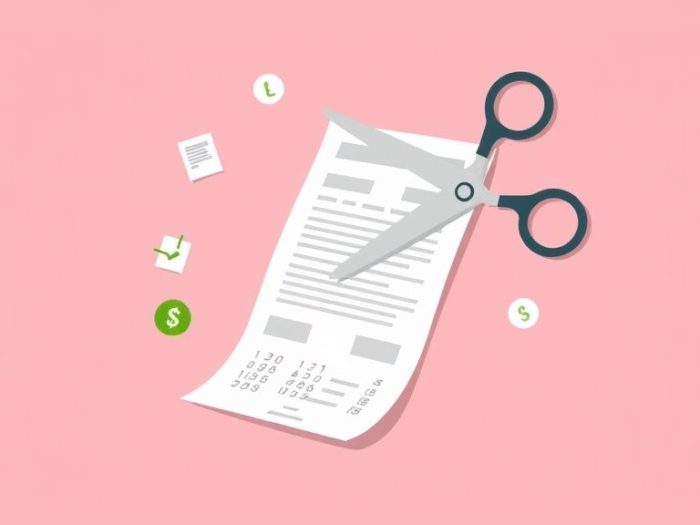Reducing your monthly expenses can significantly improve your financial health, allowing
you to save more, pay off debt faster, or invest for the future. The good news is,
you can often cut back by $500 a month without drastically altering your lifestyle.
This article provides practical strategies and tips to achieve this goal.
Understanding Your Spending Habits
The first step is to understand where your money is currently going.
-
Track Your Expenses: Use a budgeting app, spreadsheet, or notebook
to record all your spending for at least a month. -
Categorize Your Spending: Group your expenses into categories like
housing, food, transportation, entertainment, etc. -
Analyze Your Spending: Identify areas where you’re overspending or
where you can cut back.
Strategies to Cut Expenses by $500/Month
1. Housing (Potential Savings: $100-$200)
Housing is often the largest expense, but there are ways to reduce costs:
-
Negotiate Rent: If your lease is up for renewal, negotiate with
your landlord. -
Refinance Mortgage: If you own, consider refinancing to a lower
interest rate. -
Downsize: If feasible, consider moving to a smaller or less
expensive apartment or house. -
Reduce Energy Consumption: Conserve electricity and water to lower
utility bills.
2. Food (Potential Savings: $50-$150)
Food costs can add up quickly, but you can save by:
-
Meal Planning: Plan your meals for the week to avoid impulse
purchases and reduce food waste. - Cook at Home: Prepare more meals at home instead of eating out.
-
Grocery Shopping Strategically: Use coupons, buy in bulk, and avoid
shopping when hungry. -
Reduce Food Waste: Store leftovers properly and use them in future
meals.
3. Transportation (Potential Savings: $50-$100)
Transportation expenses can be reduced by:
-
Carpooling or Public Transportation: Share rides or use public
transportation when possible. - Reduce Driving: Combine errands to reduce trips and save on gas.
-
Shop Around for Insurance: Compare insurance rates to find the best
deal. -
Maintain Your Vehicle: Regular maintenance can prevent costly
repairs.
4. Entertainment (Potential Savings: $50-$100)
You can still enjoy yourself while saving money on entertainment:
-
Free Activities: Explore free or low-cost activities in your
area. - Limit Dining Out: Reduce the frequency of dining out.
-
Cut Back on Subscriptions: Evaluate your subscriptions (streaming
services, magazines) and cancel those you don’t use. - Find Deals: Look for discounts and deals on entertainment.
5. Other Expenses (Potential Savings: $50-$150)
Look for savings in other areas:
-
Negotiate Bills: Negotiate lower rates on your phone, internet, or
cable bills. -
Reduce Shopping: Avoid impulse purchases and buy only what you
need. -
DIY Projects: Do home repairs or improvements yourself instead of
hiring professionals. -
Shop Around: Compare prices for insurance, phone plans, and other
services.
Example Savings Plan
- Housing: $150
- Food: $100
- Transportation: $50
- Entertainment: $100
- Other Expenses: $100
Total Savings: $500
Important Considerations
- Prioritize: Focus on the areas where you can save the most money.
-
Gradual Changes: Make gradual changes to your spending habits for
long-term success. -
Balance: Don’t deprive yourself completely; allow for some
enjoyment. -
Automate: Automate your savings to ensure you’re consistently
putting money aside.
Conclusion
Cutting your monthly expenses by $500 is achievable with careful planning and
conscious effort. By tracking your spending, identifying areas for reduction, and
implementing these strategies, you can improve your financial situation without
sacrificing your overall quality of life.
Related Keywords
Cut monthly expenses, reduce spending, save money, budgeting tips, lower bills,
reduce living expenses, save $500 a month, financial savings, money saving tips,
budgeting strategies.
Frequently Asked Questions (FAQ)
1. Why is it important to track my expenses?
Tracking your expenses helps you understand where your money is going and identify areas where you can cut back.
2. What are some examples of “Needs” in a budget?
Needs are essential expenses like housing, groceries, utilities, and transportation.
3. How can I save money on housing?
You can save on housing by negotiating rent, refinancing your mortgage, downsizing, or reducing energy consumption.
4. What are some strategies for reducing food costs?
Strategies include meal planning, cooking at home, shopping strategically, and reducing food waste.
5. How can I lower my transportation expenses?
You can lower transportation expenses by carpooling, using public transportation, reducing driving, shopping around for insurance, and maintaining your vehicle.
6. How can I save money on entertainment?
You can save on entertainment by exploring free activities, limiting dining out, cutting back on subscriptions, and finding deals.
7. Are there other areas where I can cut expenses?
Yes, you can also look for savings by negotiating bills, reducing shopping, and doing DIY projects.
8. Is it important to make gradual changes to my spending habits?
Yes, making gradual changes is more sustainable for long-term success.
9. Should I completely deprive myself to save money?
No, it’s important to allow for some enjoyment and balance in your budget to avoid burnout.
10. How can I ensure I consistently save money?
Automating your savings is a great way to ensure consistent contributions.



